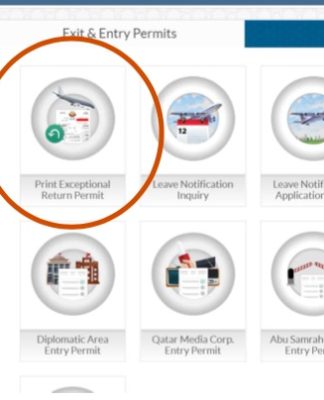GROWTH2023
How pay transparency can help close wage gaps in the workplace
Apr 25, 2023
Pay transparency has risen steadily over the past three years, both in the US and in other countries.
Pay transparency has risen steadily over the past three years, both in the US and in other countries.
Image: Getty Images/iStockphoto.
Svenja Gudell
Chief Economist, Indeed Inc
Share:
A hand holding a looking glass by a lake
CROWDSOURCE INNOVATION
Get involved with our crowdsourced digital platform to deliver impact at scale
Stay up to date:
GROWTH2023
This article is part of:
The Growth Summit: Jobs and Opportunity for All
Listen to the article
9 min listen
Even though pay transparency has risen overall in recent years, wide disparities still remain between countries and industries.
US research shows that state and local regulations requiring pay disclosure can help boost adoption of the practice.
More action is needed to close the wage gap and help job seekers negotiate equitable salaries.
Pay transparency – corporate disclosure of existing employees’ pay, along with the inclusion of wage and salary data in publicly advertised job postings – can help meaningfully reduce enduring wage gaps, especially along racial and gender lines. Enacting salary disclosure laws can be an effective tool for policy-makers keen on reducing inequality. But inconsistent global adoption of pay transparency practices threatens to keep pay inequality deeply entrenched in the global workplace.
In 2022, a female worker in the US could expect to earn just $0.82 for every $1 earned by a man, according to a recent analysis from Pew Research Center. Statistics from the US Department of Labor show that a Black worker in America earns only about $0.76 for every dollar a white worker earns – and that Latino workers earn just $0.73 to the dollar.
This pay inequity often begins with a starting salary and follows employees throughout their careers. Pay transparency can shift some salary negotiating power from employers to employees and candidates, helping eliminate conscious/unconscious hiring biases and forcing employers to be more accountable in implementing fair pay policies.
Have you read?
Here’s how salary transparency is changing in the US
Does knowledge of a candidate’s salary history affect the hiring process?
How much should you ask for in a salary negotiation?
But while progress towards widespread pay transparency has been made in recent years, the majority of online job postings in the US and other countries still leave critical salary information unknown to would-be applicants. On their own, expanded regulations mandating pay transparency won’t immediately close persistent wage gaps. But research shows that even the threat of stricter transparency rules is enough to compel many firms to adopt the practice, especially as the persistence of remote work pushes employers in less-regulated areas to compete for workers living in more-regulated locales.
Pay transparency – measured here as the share of online job postings on Indeed that overtly advertise wage information – has risen steadily over the past three years, both in the US and other countries.
The share of US job postings on Indeed advertising employer-provided salary information more than doubled between February 2020 and February 2023, rising from 18% to 44%. The pay transparency rate in Germany over the same time increased from 8% to 20%. In Canada and France, the share of postings with salary information rose by 86% and 54%, respectively, between February 2020 and February 2023.
Pay transparency is rising in many countries. Source: Indeed.
Line graph with five lines titled “Pay transparency is rising in many countries.” The graph has a vertical axis ranging from 0% to 50% and includes observations for Australia (AU), Germany (DE), Canada (CA), France (FR), and the United States (US). Indeed tracked the percentage share of job postings containing employer-provided salary information monthly from January 2019 to March 2023 The chart shows transparency rising across all displayed countries since 2020, but the increase is most pronounced in Germany, the US, and Canada. Source: Indeed.
A recent Indeed analysis of US job postings found that growth in pay transparency in job postings over the past few years can be attributed to several factors that are likely also present in other countries. Tight labour markets may be pushing some employers to be more forthcoming with salary information to attract more would-be applicants to open roles. The presence of salary information may also speed up the employer/employee matching process, especially in a tight market, by weeding out those would-be applicants who will not or cannot accept the salary offered. The rise and persistence of remote work may also play a role, with employers more compelled to broadly advertise salary information in hopes of attracting candidates living in areas where access to that data is expected and/or otherwise more commonplace.
DISCOVER
How is the World Economic Forum promoting equality in the workplace?
But the biggest likely driver of increased pay transparency, at least in the US, is the simple presence of laws requiring salary disclosure. In 2019, the state of Colorado passed legislation requiring employers to include salary information in job postings starting 1 January 2021. When the bill passed, only about 16% of US job postings provided salary information. Since then, California, Washington, and New York City have enacted similar requirements, with the rest of New York state expected to follow later this year.
And the laws appear to work – of the dozens of US metro areas included in this analysis, the 10 with the highest overall rates of transparency are all located in states covered by pay disclosure laws.
Sales transparency is growing fastest in areas with new regulation. Source: Indeed.
Even in areas without formal requirements for salary transparency, proximity to jurisdictions with transparency laws in place can be enough to spur meaningful progress. After removing states and cities with salary visibility laws in place, the three largest metro areas in Utah – which otherwise has no statewide transparency regulations – jump to the top of the list of most-transparent markets, perhaps a halo effect from Utah’s border with Colorado.
Top 10 most transparent metro areas that have no regulation. Source: Indeed.
The potential of future regulation also appears to be enough to drive growth in transparency. The share of postings in Honolulu with salary information grew by 77% over the past year, even though Hawaii didn’t introduce a bill requiring pay disclosure until January. Transparency bills have also been proposed (but not yet passed) in Connecticut and Massachusetts, with similarly rapid growth in salary-transparent postings in markets in both states. Other metros on the list below are adjacent to states with active or proposed pay transparency legislation.
Sales transparency is still growing quickly in areas without regulation. Source: Indeed.
Finally, while the presence of or proximity to salary transparency laws can be enough to encourage more employers to embrace transparency, the opposite is also true: where there are no laws to compel transparency, transparency itself is diminished. Of the 20 US metros with the lowest pay visibility in postings, 18 are in the country’s south, where transparency regulation (and regulation overall) is typically lower than in other US regions. This trend still holds up, even accounting for differences in the types of jobs available in different regions.
Metropolitan areas with the lowest pay transparency. Source: Indeed.
More transparency is, on the whole, a good thing – even if a world where the exact pay for every job is known to anyone and everyone remains unrealistic. And the world can do a lot better, despite recent progress: the majority of Indeed job postings in the US, Germany, Canada and Australia, for example, still do not contain any salary information.
“Equal pay for equal work” is a noble goal that does not end at pay transparency but can certainly begin there. More really is more, and more access to more timely and more actionable data leads to more opportunities for more workers from more backgrounds, helping shift the balance of power in determining salaries toward the job seeker.
Don’t miss any update on this topic
Create a free account and access your personalized content collection with our latest publications and analyses.
License and Republishing
World Economic Forum articles may be republished in accordance with the Creative Commons Attribution-NonCommercial-NoDerivatives 4.0 International Public License, and in accordance with our Terms of Use.
The views expressed in this article are those of the author alone and not the World Economic Forum.
Related topics:






























